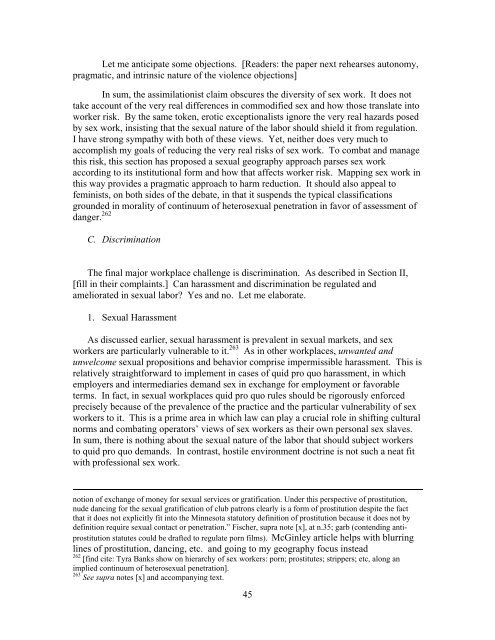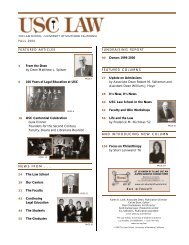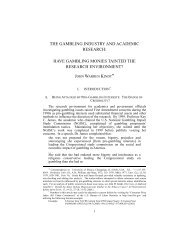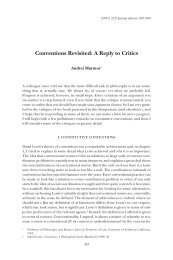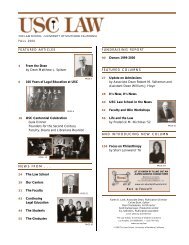1 Regulating Sex Work Adrienne D. Davis VERY ROUGH DRAFT ...
1 Regulating Sex Work Adrienne D. Davis VERY ROUGH DRAFT ...
1 Regulating Sex Work Adrienne D. Davis VERY ROUGH DRAFT ...
Create successful ePaper yourself
Turn your PDF publications into a flip-book with our unique Google optimized e-Paper software.
Let me anticipate some objections. [Readers: the paper next rehearses autonomy,<br />
pragmatic, and intrinsic nature of the violence objections]<br />
In sum, the assimilationist claim obscures the diversity of sex work. It does not<br />
take account of the very real differences in commodified sex and how those translate into<br />
worker risk. By the same token, erotic exceptionalists ignore the very real hazards posed<br />
by sex work, insisting that the sexual nature of the labor should shield it from regulation.<br />
I have strong sympathy with both of these views. Yet, neither does very much to<br />
accomplish my goals of reducing the very real risks of sex work. To combat and manage<br />
this risk, this section has proposed a sexual geography approach parses sex work<br />
according to its institutional form and how that affects worker risk. Mapping sex work in<br />
this way provides a pragmatic approach to harm reduction. It should also appeal to<br />
feminists, on both sides of the debate, in that it suspends the typical classifications<br />
grounded in morality of continuum of heterosexual penetration in favor of assessment of<br />
danger. 262<br />
C. Discrimination<br />
The final major workplace challenge is discrimination. As described in Section II,<br />
[fill in their complaints.] Can harassment and discrimination be regulated and<br />
ameliorated in sexual labor? Yes and no. Let me elaborate.<br />
1. <strong>Sex</strong>ual Harassment<br />
As discussed earlier, sexual harassment is prevalent in sexual markets, and sex<br />
workers are particularly vulnerable to it. 263 As in other workplaces, unwanted and<br />
unwelcome sexual propositions and behavior comprise impermissible harassment. This is<br />
relatively straightforward to implement in cases of quid pro quo harassment, in which<br />
employers and intermediaries demand sex in exchange for employment or favorable<br />
terms. In fact, in sexual workplaces quid pro quo rules should be rigorously enforced<br />
precisely because of the prevalence of the practice and the particular vulnerability of sex<br />
workers to it. This is a prime area in which law can play a crucial role in shifting cultural<br />
norms and combating operators’ views of sex workers as their own personal sex slaves.<br />
In sum, there is nothing about the sexual nature of the labor that should subject workers<br />
to quid pro quo demands. In contrast, hostile environment doctrine is not such a neat fit<br />
with professional sex work.<br />
notion of exchange of money for sexual services or gratification. Under this perspective of prostitution,<br />
nude dancing for the sexual gratification of club patrons clearly is a form of prostitution despite the fact<br />
that it does not explicitly fit into the Minnesota statutory definition of prostitution because it does not by<br />
definition require sexual contact or penetration.” Fischer, supra note [x], at n.35; garb (contending antiprostitution<br />
statutes could be drafted to regulate porn films). McGinley article helps with blurring<br />
lines of prostitution, dancing, etc. and going to my geography focus instead<br />
262 [find cite: Tyra Banks show on hierarchy of sex workers: porn; prostitutes; strippers; etc, along an<br />
implied continuum of heterosexual penetration].<br />
263 See supra notes [x] and accompanying text.<br />
45


